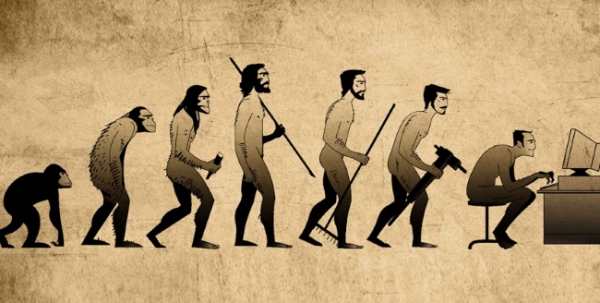"Fossils can show an animal or plant, or a footprint, or even dinosaur poo!"
The new curriculum uses fossils as a starting point, and requires children to ‘recognise that fossils provide information about living things that inhabited the Earth millions of years ago.’ Fossils are an imprint of the shape of an animal or plant that lived many years ago. They can show a whole animal or plant, or just part of it, or a footprint, or even dinosaur poo! People have been unearthing fossils for thousands of years, but didn’t have any idea what they were until recently.
We only know about some extinct animals like dinosaurs because of the fossils they left behind. Scientists can use fossils as clues to help them work out how long life has existed on earth and how different organisms are related to each other.
Fossil samples are a fantastic starting point for teaching about evolution as they are a physical thing that students can explore. Of course, for an even more hands-on lesson, you could ask learners to make their own!
For this activity, you can either make the dough in advance or give children time to make their own, as long as you don’t mind an extra messy classroom!
- Give small groups of children some fossil dough (you can find a brilliant recipe here).
- Place a selection of everyday objects such as cutlery, building blocks, jewellery, paint brushes or animal models on an investigation table.
- Get children to choose an object to make an imprint in their fossil dough. Encourage them to think carefully about how to make the impression so it isn’t too easy to guess.
- Once all the groups have made their imprint, display the fossils somewhere to be examined.
- Ask each group to take it in turns to guess what the fossils are.
- Once all of the guesses have been recorded, each group can reveal what their fossil is. There are bound to be some surprises!
You can encourage children to talk about the fossils they made. Is it easy or difficult to identify what made the imprints? Did everyone have the same or different ideas about what made the imprints?
Have a discussion about how easy or difficult it is to identify what real fossils show. Draw attention to the things fossils can’t tell us, like what colour something was. Can the children think of any problems with making predictions about ancient plants and animals from fossil evidence? At this point children could examine some real fossils and talk about what animals or plants might have made them.
This activity focuses on fossils made when a dead plant or animal is buried by sand, soil, ash or mud and become fossilised over hundreds of years. A great next step would be to let children explore some different types of fossils, for example animals that are preserved in amber or fossilised wood. What are the challenges of identifying animals or plants from each type of fossil? Which type of fossil do the children think would be most helpful to a scientist trying to learn about ancient plants and animals?
"Let children explore some different types of fossils, eg amber or wood."
The curriculum suggests Charles Darwin and Mary Anning as potential case studies for work on evolution and inheritance. Shaping a unit of work to include diary entries for the days they made their big discoveries, or biographies, or newspaper articles from when they made their ideas public would be a wonderful way to weave literacy skills into this new science topic. Another lovely literacy idea would be to encourage children to create a storyboard about how an animal came to be, for example how leopards gained their spots. There are lots more ideas for teaching evolution, including a great video on how fossils form, try www.jbprimaryscience.co.uk.
Although the ideas of evolution and natural selection were problematic and controversial when first introduced, there is no need for this to be the case when it is introduced to the Primary classroom. With hands-on activities, and cross curricular case studies this topic can delight both children and teachers alike.
Do you teach evolution? Share your experiences below!


















